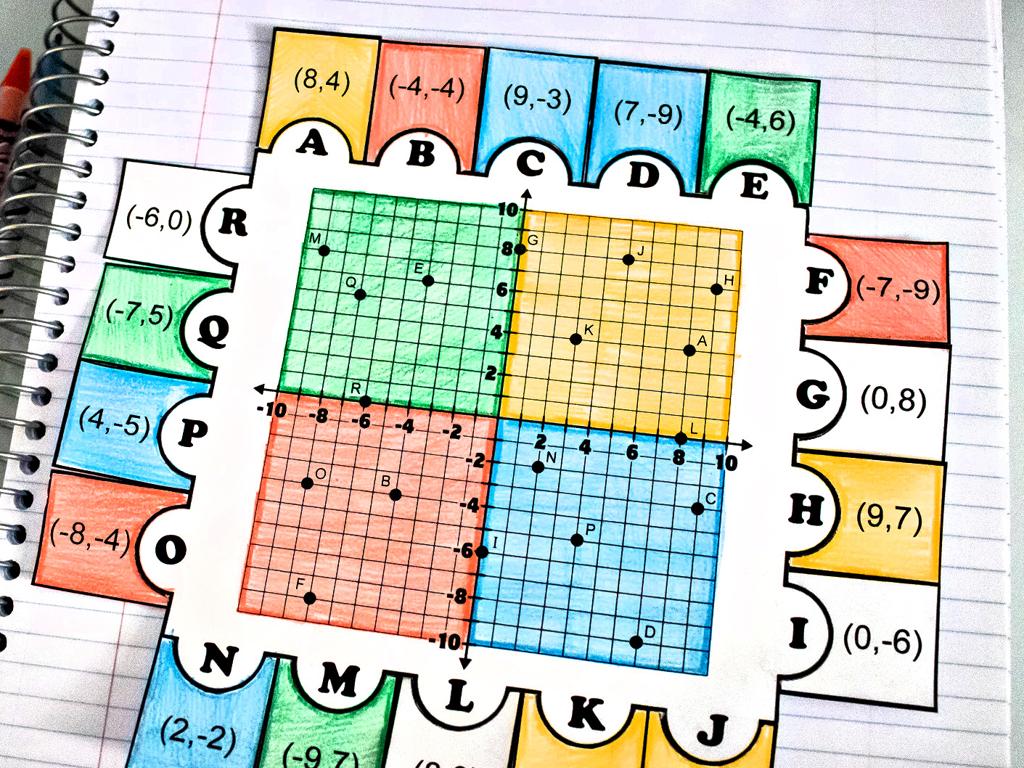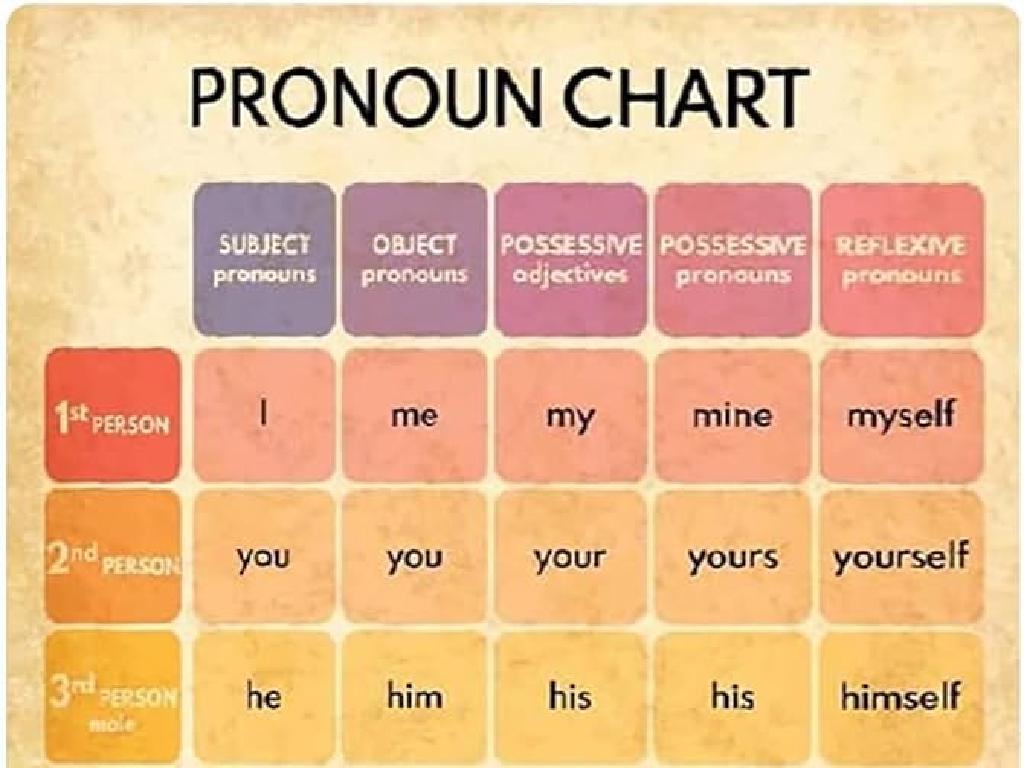Inherited And Acquired Traits: Use Evidence To Support A Statement
Subject: Science
Grade: Seventh grade
Topic: Genes To Traits
Please LOG IN to download the presentation. Access is available to registered users only.
View More Content
Genes and Traits: Heredity and Trait Acquisition
– Basics of heredity explained
– Heredity is how traits are passed from parents to offspring.
– Inherited traits: passed down
– Traits like eye color or hair type come from our parents.
– Acquired traits: gained over time
– Skills like riding a bike or language are learned.
– Evidence supporting traits
– Use family trees or personal changes to show evidence.
|
This slide introduces students to the fundamental concepts of heredity, inherited traits, and acquired traits. Begin by explaining heredity as the process through which genetic information is passed from parents to their children. Highlight that inherited traits are those that are genetic, such as eye color, hair texture, and certain behaviors. Contrast these with acquired traits, which are not genetic but are learned or developed over time, such as the ability to play an instrument or speak a foreign language. Encourage students to think of examples from their own lives to understand the difference between inherited and acquired traits. Discuss how evidence, like family resemblance or personal achievements, can support the categorization of traits. This will set the stage for deeper discussions on genetics and environmental influences on traits.
DNA: The Blueprint of Life
– DNA as life’s blueprint
– DNA’s role in trait determination
– DNA sequences encode for proteins that build and regulate your body.
– Human inherited traits
– Eye color, hair color, and earlobe type are examples of inherited human traits.
– Animal inherited traits
– Fur color, beak shape, and instinctual behaviors are traits animals inherit.
|
DNA, or deoxyribonucleic acid, is the hereditary material in humans and almost all other organisms. Nearly every cell in a person s body has the same DNA. It is the carrier of genetic information and is responsible for the transmission of traits from parents to offspring. In this slide, we’ll explore how DNA determines specific traits in both humans and animals, providing examples of inherited traits. Students should understand that while some traits are easily observable, like eye color or fur patterns, others may involve more complex genetic interactions. Encourage students to think of traits they have inherited from their parents and to consider how animals in the wild may benefit from their inherited traits.
Exploring Inherited Traits
– Traits inherited from parents
– Traits like eye color, hair type, and earlobe attachment are passed down.
– Common examples of inherited traits
– Eye color, hair type, and earlobe attachment are often inherited.
– Activity: Discover your inherited traits
– List traits you’ve inherited from your parents and compare with classmates.
|
This slide introduces the concept of inherited traits, which are genetic characteristics passed from parents to their children. Use examples like eye color, hair type, and earlobe attachment to illustrate these traits. The class activity involves students identifying their own inherited traits and sharing them with the class. This will help students understand the concept of inheritance and observe real-life examples. Encourage students to discuss how these traits differ among family members and what that reveals about genetic variation. Provide guidance on how to respect and appreciate the diversity in the classroom during the activity.
Acquired Traits: Beyond Genetics
– Definition of acquired traits
– Traits that are not genetic but developed after birth
– Examples: Skills and marks
– Language abilities, scars from falls, riding a bike
– Acquired vs. inherited traits
– Acquired traits are gained, while inherited traits are passed from parents
– Class discussion activity
|
This slide introduces the concept of acquired traits, which are not inherited but developed through life experiences. Examples include learning a new language, scars from injuries, or the ability to ride a bicycle. These contrast with inherited traits, such as eye color or natural hair texture, which are passed down from parents. Encourage students to think about and discuss their own acquired traits, fostering an understanding of the difference between traits that are learned or developed versus those that are inherited. This activity will help students use evidence from their own lives to support the concept of acquired traits.
Evidence of Inherited Traits
– Predict traits with Punnett Squares
– A tool to forecast offspring traits from parental genes
– Understand genetic variation
– Differences in genes that make us unique
– Explore mutations
– Permanent changes in DNA sequence
– Examine case studies of inherited diseases
– Investigate diseases passed down in families
|
This slide aims to provide evidence of how traits are inherited and the role of genetics in this process. Punnett Squares are a visual representation to help predict the probability of an offspring inheriting particular traits from its parents. Genetic variation is the diversity in gene frequencies, and mutations are changes to the DNA sequence that can lead to variation. Students should understand that while some mutations can be harmful, others can be beneficial or have no effect at all. By examining case studies of inherited diseases, students can see real-world examples of how certain traits are passed down through generations. Encourage students to think critically about how genetics plays a role in their own traits and to consider ethical questions related to genetic inheritance.
Evidence of Acquired Traits
– Environment shapes traits
– Sun tanning or language acquisition as examples
– Learning leads to adaptation
– Skills developed through practice, like playing an instrument
– Adaptation vs. Inheritance
– Acquired traits are not genetic, unlike inherited traits
– Animal case studies
– Observations of behaviors in pets or wildlife adapting to challenges
|
This slide aims to explain how acquired traits differ from inherited traits, emphasizing that they result from environmental influences and experiences rather than genetic inheritance. Discuss how traits like sun tanning or learning a new language are acquired through interaction with the environment. Highlight the importance of learning and practice in the development of skills, such as playing an instrument, which is an acquired trait. Contrast this with inherited traits that are passed down genetically. Use case studies of animals, such as birds learning to use tools or pets learning tricks, to provide concrete examples of acquired traits. Encourage students to think critically about the evidence that supports the concept of acquired traits and to consider how both inherited and acquired traits contribute to the diversity of life.
Comparing Inherited and Acquired Traits
– Define inherited traits
– Traits passed from parents to offspring, e.g., eye color
– Define acquired traits
– Traits gained during life, e.g., language skills
– Interactive Q&A session
– Discuss traits in our class
– Observe and share traits with classmates
|
This slide aims to help students differentiate between inherited and acquired traits. Begin by defining inherited traits as characteristics passed genetically from parents to offspring, such as hair color, blood type, or certain natural talents. Acquired traits, on the other hand, are not genetic but developed over time, like skills in a sport or a language. The interactive Q&A will engage students to apply their knowledge and answer questions on the topic. Finally, encourage a group discussion where students can identify and share examples of both inherited and acquired traits they observe within the classroom. This activity will solidify their understanding and allow them to relate the concepts to real-life scenarios.
Supporting Statements with Evidence in Genetics
– Significance of evidence in science
– Evidence backs up scientific claims and theories.
– Methods to gather and present evidence
– Observe, record data, use reliable sources to collect evidence.
– Classroom activity: Evidence for a trait
– Observe inherited traits among classmates, like eye color, and record findings.
|
This slide emphasizes the importance of evidence in scientific inquiry, particularly in the study of genetics. Students should understand that evidence is crucial for supporting scientific statements and theories. Teach them how to gather evidence through observation, experimentation, and research, and how to present it in a clear and logical manner. The classroom activity involves students observing and collecting data on an inherited trait within the class, such as eye color, to understand how traits are passed down and how evidence can be used to support genetic predictions. Provide guidelines for the activity, ensuring that students respect each other’s privacy and differences. Suggest alternative activities such as collecting data on tongue rolling ability or earlobe attachment, and guide them on how to present their findings.
Class Activity: Trait Survey
– Conduct a trait survey in class
– Record everyone’s inherited & acquired traits
– Note traits like eye color (inherited) vs. language spoken (acquired)
– Analyze the collected data
– Look for patterns and compare traits within the class
– Present and discuss findings
|
This activity is designed to help students understand the difference between inherited and acquired traits through practical application. Divide the class into small groups and provide them with a survey template to record traits of their classmates. Inherited traits might include eye color, hair type, or earlobe attachment, while acquired traits could be skills like playing an instrument or riding a bike. After collecting the data, students should analyze it to find patterns or commonalities. Each group will then present their findings to the class, followed by a discussion on how traits are passed down in families and which traits can be learned or influenced by the environment. Possible activities: 1) Comparing identical vs. fraternal twins’ traits, 2) Surveying family members’ traits, 3) Creating a bar graph of class traits, 4) Discussing traits of pets or plants.
Conclusion: Inherited vs. Acquired Traits
– Recap: Inherited vs. Acquired Traits
– Inherited traits come from parents, acquired traits develop from environment
– Reflect on today’s lessons
– Homework: Personal Trait Essay
– Write about a trait you were born with and one you’ve developed
– Understanding our unique traits
– Recognize the differences and how they make us who we are
|
As we wrap up today’s lesson, it’s important to review the key differences between inherited and acquired traits. Inherited traits are those that are passed down from our parents through genes, such as eye color or natural hair texture. Acquired traits, on the other hand, are developed through life experiences, such as learned languages or skills. For homework, students are tasked with writing an essay about one inherited trait and one acquired trait they possess. This will help them apply what they’ve learned to their own lives and understand how genetics and environment shape who they are. Encourage students to think critically about the traits they discuss and provide evidence for why they believe each trait is inherited or acquired.






